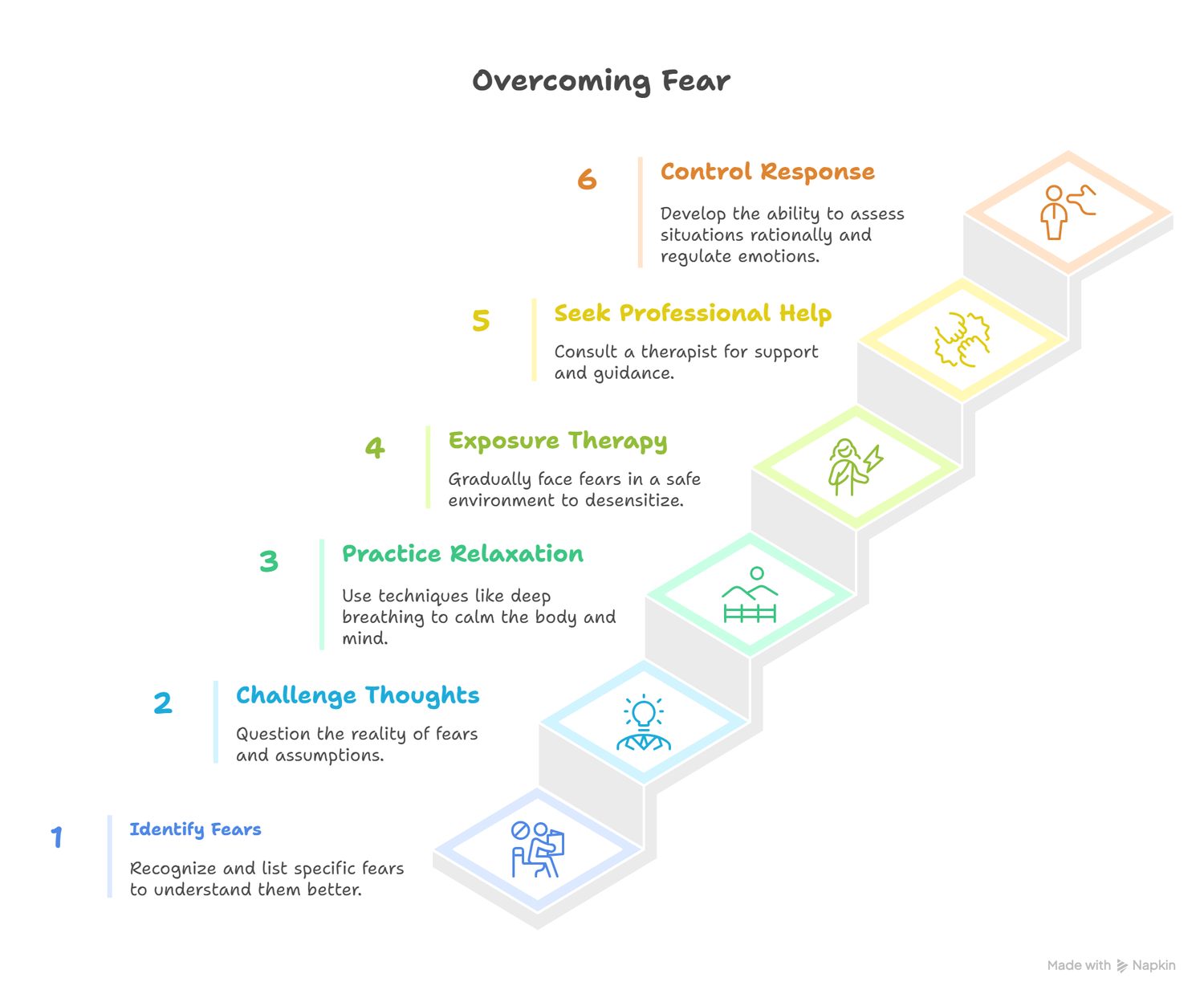
Understanding Fear
Understanding Fear: When Your Brain Thinks a Lion's Chasing You (Even When It's Just a Deadline) 🤯
Ever felt that sudden gut-punch of panic, that icy grip of dread, or that frantic brain buzz, even when there’s no actual monster under the bed? Yeah, me too. That, my friend, is fear.
But here's the thing: fear isn't some insurmountable obstacle or a monster under the bed; it’s simply a response. A reaction to something – real or imagined – that your brain perceives as a threat. That perception? It’s the whole damn ballgame.
It could be a tangible threat, sure, like nearly reversing into a post (whoops, been there!). But more often for us mission-driven entrepreneurs, it's the invisible stuff: the fear of launching, of failing publicly, of being judged, of raising your prices, or even just the constant worry about rising mortgage payments and escalating food bills. Your body doesn't care if the threat is a snarling dog or a looming deadline; if you think you're threatened, it reacts.
And oh, how it reacts! Your heart decides it's training for a marathon, pounding like crazy. Your breath gets shallow and fast, like you’re trying to suck all the air out of the room. Your senses sharpen, making every tiny notification or sound feel like an air raid siren. This, my friend, is the infamous "fight-or-flight" response, a primal survival mechanism hardwired into our beautiful, complex brains. It's designed to keep us alive, not to keep us stuck rewriting social media captions 10 times.
Deep inside your brain, there’s a tiny almond-shaped hero called the amygdala. It’s your brain’s lightning-fast alarm system. Before your conscious brain even has time to make a cup of tea, the amygdala has already screamed "THREAT!" and hit the big red panic button.
Now, ideally, your prefrontal cortex (the grown-up, rational part of your brain) swoops in like a superhero and says, "Hold on, Amy. Is this really a lion, or just a new email?" It assesses the situation, determines if the fear is justified, and, if not, helps calm the alarm. But, let’s be honest, this process isn't always perfect.
Especially when we're stressed, perpetually tired (chronic fatigue, anyone?), or have some past trauma lurking about, the amygdala can get a bit… overzealous. Even harmless stuff can send it into a full-blown meltdown. This is why you feel exhausted, why you overthink, and why even small actions can feel overwhelming.
The experience of fear is so personal, isn't it? For some, it's a full-body assault: sweating, trembling, that nauseous pit in your stomach. For others, it’s more mental: a spiral of anxiety, a wave of panic, a creeping sense of dread. The intensity can depend on a million things – your past experiences, your current stress levels, and, of course, the specific brand of boogeyman your brain has conjured.
But here's the crucial point: Fear is not inherently bad. It's a natural, adaptive superpower that has kept humanity chugging along for millennia. It helps us avoid truly dangerous situations and pushes us to prepare for big challenges.
However, when it becomes that loud, irrational voice constantly screaming "You can't!" or "You're just faking it, dimwit!" (hello, imposter syndrome!), it crosses the line. That's when it stops being a protector and starts being a prison, interfering with your daily life and your mission. Think about chronic anxiety or phobias – they aren't about lions anymore; they're about everyday life feeling like a minefield.
Understanding that fear is just a response to perceived threats is the first, most liberating step towards managing it. It allows us to challenge those perceptions and learn more rational, powerful ways to cope.
Ready to Reclaim Your Power from the Fear Monster? 🥊

You're brilliant, ambitious, and capable. You don't need to be defined by your emotions when they feel out of control. Here are some simple yet mighty strategies for managing that fear response:
Pinpoint Your Boogeymen: What specifically are you afraid of? Is it public speaking? Raising your prices? Failure? Write it down. Getting it out of your head and onto paper helps you see it for what it is.
Challenge Those Lies: Are your fears based on cold, hard reality, or are they built on assumptions, exaggerations, or that nasty inner critic? Question their validity. My own journey with high-functioning dyslexia and anxiety has taught me the power of reframing those ingrained negative beliefs.
Breathe It Out (Seriously!): Your breath is your instant nervous system reset button. Deep breathing, meditation, even simple techniques like Star Breathing (which you'll find in our Mental Clarity Toolkit) can calm your body and mind when you’re feeling overwhelmed.
Tiny Steps, Big Wins (Exposure Therapy Lite!): If you're terrified of going live, start with just recording yourself. Gradually expose yourself to the thing you fear in small, manageable doses. This rewires your brain for self-trust, showing it that you can survive – and even thrive – through the "threat." This is central to the "Core 15-Minute Fixes" in 7 Days to Less Worry.
Ask for Backup: If fear is truly hijacking your life, please reach out for professional help. A good therapist or counselor can provide invaluable guidance and support in developing coping mechanisms. It’s not a weakness to seek help; it’s a smart strategy. Even experts have coaches!
Ultimately, overcoming fear isn't about eradicating it (it's a part of being human!). It’s about learning to control your response to perceived threats. It's about developing the ability to assess situations rationally, challenge negative thoughts, and regulate your emotions.
With practice, compassion, and a dose of your inherent resilience, you can learn to manage your fear and live a more fulfilling life. Remember, the power to control your fear lies within you. And trust me, your peace of mind and your true impact are worth every single step.